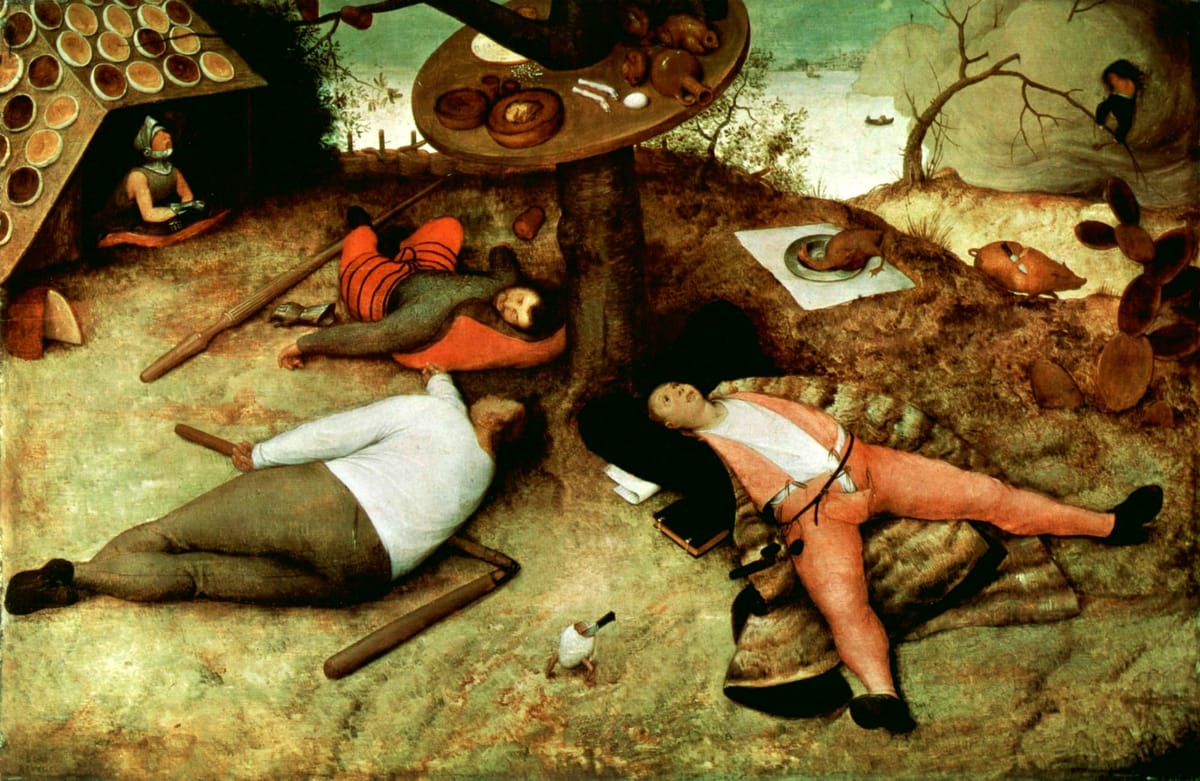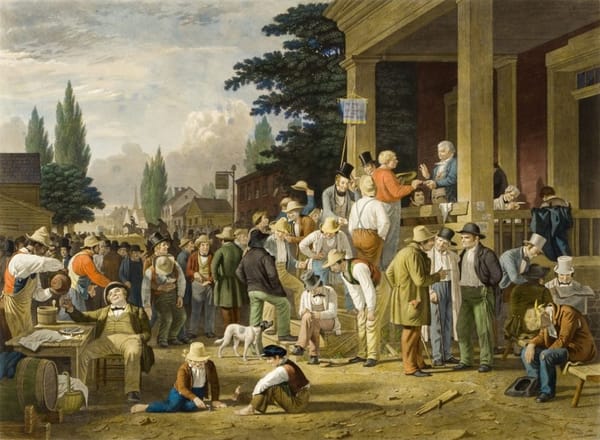Anthropology of Abundance: A Philosophical Reading of Tesla’s Master Plan IV
Tesla’s Master Plan IV is more than a roadmap—it is a vision of abundance joined with dignity, liberty, and conscience. If guided wisely, it could stand as one of humanity’s most extraordinary achievements: progress not as parody, but as promise fulfilled.

At the close of the eighteenth century, two visions of humanity’s future collided. The Marquis de Condorcet, in his Sketch for a Historical Picture of the Progress of the Human Mind (1795), foresaw science and reason dissolving every constraint—poverty, ignorance, disease. “The perfectibility of man is truly indefinite,” he wrote; “and the progress of this perfectibility…has no other limit than the duration of the globe” (Condorcet, 1795). A few years later, Thomas Robert Malthus offered a stark rejoinder in his Essay on the Principle of Population (1798). Abundance, he argued, was a mirage: population would always outpace resources, condemning humanity to scarcity. For two centuries, their duel has shaped economic thought, optimism and caution circling each other like ancient adversaries.
Two centuries later, Tesla’s Master Plan Part IV reopens the contest. “Growth is infinite,” it proclaims. “Growth in one area does not require decline in another. Shortages…can be remedied by improved technology, greater innovation and new ideas”. Condorcet rises again, this time with robots and solar cells in hand.
Tesla’s wager is more than economic. Its promise of “sustainable abundance” raises deeper reflections about liberty, dignity, and the human good.
But Tesla’s wager is more than economic. Its promise of “sustainable abundance” raises deeper reflections about liberty, dignity, and the human good. Its five guiding principles—growth without limits, innovation as emancipation, technology as solver of problems, autonomy for all, and access as justice—read less as corporate aims than as philosophical propositions. Each, taken seriously, opens into a conversation that must include not only engineers, but also philosophers and social thinkers who have long wrestled with the meaning of progress.
Growth Is Infinite
Tesla begins with its boldest claim: that prosperity need not be zero-sum. Here it revives Condorcet’s Enlightenment conviction that human reason would indefinitely expand the horizons of knowledge and well-being. In his Sketch (1795), Condorcet insisted that “the perfectibility of man is truly indefinite”; Tesla translates that optimism into the idiom of batteries, robots, and solar grids, portraying growth not as consumption but as multiplication. This finds modern allies. Julian Simon argued in The Ultimate Resource (1981) that “the ultimate resource is people—skilled, spirited, and hopeful people,” whose ingenuity ensures resources are effectively infinite. Robert Solow had already made the point mathematically in A Contribution to the Theory of Economic Growth (1956): capital and labor explain only part of growth; technological innovation is the decisive factor over time.
What Tesla describes as infinite expansion is also a profound reordering of society. Abundance liberates, but it also dislocates.
Yet here Karl Polanyi offers a needed broadening. In The Great Transformation (1944), he argued that economic expansion is never a purely technical matter: “the human economy…is embedded and enmeshed in institutions, economic and non-economic.” Markets, innovations, and growth reshape not only production but also culture, kinship, and political life. What Tesla describes as infinite expansion is also a profound reordering of society. Abundance liberates, but it also dislocates. The transition from agrarian subsistence to industrial capitalism brought new freedoms, but also uprooted traditions and imposed new forms of dependency. Likewise, an economy of robots and renewable grids will not only multiply goods but transform the very fabric of human life—how we work, relate, and imagine purpose.
Polanyi thus reminds us that growth, while elastic, is never neutral. It dissolves some constraints while creating others, and the measure of flourishing is not simply output, but whether societies can absorb transformation without tearing their social fabric.
Polanyi thus reminds us that growth, while elastic, is never neutral. It dissolves some constraints while creating others, and the measure of flourishing is not simply output, but whether societies can absorb transformation without tearing their social fabric. Human flourishing requires that this abundance be not only technological but also social: sustained by institutions, values, and forms of solidarity able to channel change into dignity rather than dislocation.
Innovation Removes Constraints
Tesla invokes history’s great inventions—the internet, semiconductors—as proof that ingenuity expands human horizons. This is Condorcet’s Enlightenment voice at its clearest: reason as a dissolver of barriers, each discovery opening the path to further discoveries. In this telling, innovation is not episodic but cumulative, a chain of progress stretching indefinitely into the future. Yet innovation alone does not constitute flourishing. Isaiah Berlin, in Two Concepts of Liberty (1958), reminded us that progress enlarges our powers, but power without choice can become coercion. New tools expand what can be done, but they also impose pressures: to adopt, to conform, to accelerate. If innovation is cast as necessity, it risks narrowing rather than broadening human possibilities.
Isaiah Berlin, in Two Concepts of Liberty (1958), reminded us that progress enlarges our powers, but power without choice can become coercion.
Other voices deepen the point. Joseph Schumpeter, in Capitalism, Socialism and Democracy (1942), called innovation “creative destruction,” a process that overturns old ways of life to make room for the new. It is dynamic, liberating, but also destabilizing—flourishing requires societies able to absorb the shock of destruction as well as reap the fruits of creation. Hannah Arendt warned in The Human Condition (1958) that the relentless pursuit of technical mastery can erode the realm of action, where freedom consists not in efficiency but in public deliberation and responsibility.
Innovation can indeed remove constraints, but for it to nurture flourishing, it must preserve the freedom to embrace or to resist, to integrate or to refrain. A society in which individuals can say yes—or no—to technological adoption is one where liberty endures alongside progress. Innovation, then, should be measured not only by the capacities it multiplies but also by the space for judgment, dissent, and plurality it protects.
A society in which individuals can say yes—or no—to technological adoption is one where liberty endures alongside progress. Innovation, then, should be measured not only by the capacities it multiplies but also by the space for judgment, dissent, and plurality it protects.
Technology Solves Tangible Problems
Tesla insists that its mission is practical: to make energy clean, transport safe, and work less burdensome. This resonates with Aristotle’s account of techne in the Nicomachean Ethics: tools that support human flourishing by freeing us for more meaningful pursuits. But Aristotle also insisted that flourishing was not comfort but virtue—an active cultivation of excellence in thought and action. Martin Heidegger, in The Question Concerning Technology (1954), warned that tools can reshape our very way of seeing the world, reducing beings to mere resources. To include these voices is not to deny Tesla’s claim, but to broaden it. Technology can solve problems; flourishing requires that it solve the right ones—those that elevate human virtue and meaning, not merely convenience.
Autonomy Must Benefit All of Humanity
Tesla’s moral center lies in its claim that autonomy—whether in vehicles or robots—must serve everyone. The promise is egalitarian: safer roads, more efficient systems, and expanded opportunities, not merely for the affluent but for society at large. It is a democratic aspiration: the benefits of autonomy should be universal, not stratified. Yet the meaning of “benefit” requires philosophical broadening. Hannah Arendt, in The Human Condition (1958), drew a vital distinction between labor, work, and action. Robots may relieve us of labor—the repetitive tasks that sustain life—and even replace forms of work, the fabrication of objects. But they cannot substitute for action: the realm where human beings appear before one another in speech, debate, and shared responsibility. A world where machines manage our routines may be safer, but if it narrows the space of action, it impoverishes our humanity.
A world where machines manage our routines may be safer, but if it narrows the space of action, it impoverishes our humanity.
John Stuart Mill’s liberal concern with individuality also resonates here. In On Liberty (1859), he argued that the worth of a civilization lies in its capacity for “individual spontaneity.” Autonomy that truly benefits humanity must not only standardize safety or efficiency but also preserve the unpredictability and originality of human initiative. Likewise, Amartya Sen’s “capabilities approach” (Development as Freedom, 1999) reminds us that well-being is measured not by commodities but by the real freedoms people enjoy—their ability to choose meaningful lives.
Autonomy that truly benefits humanity must not only standardize safety or efficiency but also preserve the unpredictability and originality of human initiative.
Tesla’s principle, viewed through these lenses, points to a profound moral horizon: autonomy as a tool for enlarging dignity, participation, and shared meaning. But flourishing is not efficiency alone. For autonomy to serve all of humanity, it must safeguard the spaces of civic life, individuality, and responsibility that no machine can replicate.
Greater Access Drives Greater Growth
Tesla’s final principle insists that wider access generates opportunity, and opportunity in turn drives growth. The logic is democratic: prosperity expands as barriers fall, and inclusion multiplies innovation. This resonates with John Rawls’ A Theory of Justice (1971), which argued that a just society organizes its institutions so that inequalities serve to improve the condition of the least advantaged. In this sense, Tesla’s vision echoes Rawlsian fairness—expanding access to energy, mobility, and time itself as a way of enlarging life-chances. But flourishing requires more than distributive fairness. It depends on whether citizens can use abundance well. Hannah Arendt, in The Human Condition (1958), warned that plenty without engagement risks hollowing out the public sphere: if citizens become passive beneficiaries rather than active participants, political life withers. Greater access, therefore, must be coupled with civic cultivation—education, culture, and institutions that foster responsibility and debate. Here Amartya Sen’s capabilities approach (Development as Freedom, 1999) deepens the insight. True development, Sen argued, is not measured by resources but by the substantive freedoms people possess—their ability to live lives they have reason to value. Access is only the beginning; growth becomes human flourishing when it equips individuals to transform opportunity into creativity, deliberation, and dignity.
Access is only the beginning; growth becomes human flourishing when it equips individuals to transform opportunity into creativity, deliberation, and dignity.
Greater access does not merely scale markets; it enriches the conditions for plural human lives. It can democratize time, energy, and possibility—but only if paired with the cultural and civic foundations that enable people to use abundance for more than consumption.
Abundance and the Human Good
Tesla’s Master Plan Part IV is extraordinary: a vision of technology lifting humanity beyond the old logic of scarcity. If realized, liberty would no longer mean competition for limited goods but freedom from want. Conscience would be reclaimed as time for reflection and responsibility. Pluralism would be enlarged as diverse pursuits flourished beyond necessity.
Yet abundance alone is not enough.
Yet abundance alone is not enough. For it to serve human flourishing, it must be broadened—by ecological conscience to sustain the planet, by liberty of choice to preserve individuality, by virtue to elevate comfort into meaning, by civic cultivation to bind prosperity into responsibility. Without these, progress risks becoming hollow.
Seen in this light, Tesla’s principles are not an endpoint but a new beginning. They revive Condorcet’s dream of infinite progress while confronting Malthus’s shadow of limit. They remind us that growth is never neutral, that innovation must serve freedom, that technology must deepen rather than diminish our humanity.
If executed and guided wisely, however, this vision need not collapse into a Cockaigne of idle plenty. It can instead mark a civilizational leap: abundance joined with dignity, technology harnessed to conscience, progress anchored in pluralism. In such a future, Tesla’s Master Plan would not stand as a parody of utopia but as one of humanity’s most extraordinary achievements—a promise fulfilled, a horizon widened, a new chapter opened in the human story.
If executed and guided wisely, however, this vision need not collapse into a Cockaigne of idle plenty. It can instead mark a civilizational leap [...]





